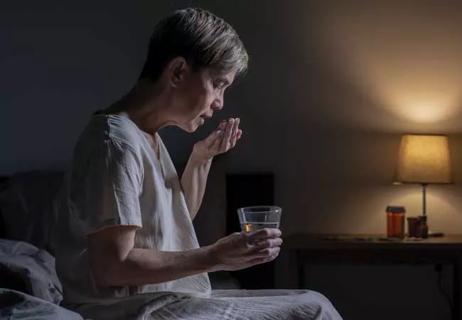Burnout found to be more likely in 20- to 39-year-olds versus older colleagues

Flexible scheduling doesn’t appear to directly influence overall clinician burnout, but it may impact variables that contribute to it, such as control over workload and perceived job stress. So suggests a new study of providers in several specialties at Cleveland Clinic. The research points to clinicians aged 20 to 39 as a high-risk group for burnout.
Advertisement
Cleveland Clinic is a non-profit academic medical center. Advertising on our site helps support our mission. We do not endorse non-Cleveland Clinic products or services. Policy
“We found that flexible scheduling makes clinicians more likely to indicate improvement in control over their workload, which can translate into reduced work-related stress,” says first author Amy Sullivan, PsyD, ABPP, Director of Caregiver Engagement and Wellbeing in Cleveland Clinic’s Neurological Institute. “Younger clinicians may be at more risk for burnout, so we should pay special attention to their unique needs.”
Published in Multiple Sclerosis and Related Disorders (2022;60:103705), the prospective study was conducted at the height of the COVID-19 pandemic. The aim was to evaluate the effect of flexible schedules versus standard schedules, and the amount of virtual care delivery, on clinician burnout.
“We were surprised that virtual visits weren’t particularly associated with a significant effect on burnout, but at the time the study was conducted, Cleveland Clinic was rapidly changing telehealth portals and there were a number of hiccups with the system from both the patient and provider perspectives,” Dr. Sullivan observes. “If we repeated the study, we might have different results because we now have a much better understanding of the telehealth portals and how best to offer virtual visits.”
Dr. Sullivan and colleagues enrolled physicians, clinical doctorate-level psychologists and advanced practice providers who dedicate at least 20 hours to direct patient care per week. All providers practiced in one of three Cleveland Clinic specialty institutes: the Neurological Institute (neurology, neurosurgery, psychology, psychiatry), the Respiratory Institute (pulmonary medicine, allergy/immunology, infectious disease, critical care medicine) and the Pediatric Institute (17 pediatric medical subspecialties).
Advertisement
Recruitment was via e-mail; participants self-identified their schedules as flexible (outside an 8 a.m. to 5 p.m. weekday template) or standard. The primary outcome was the Mini-Z survey for assessing work-life balance, which measured burnout in two different clinician groups: those with flexible schedules and those with standard schedules.
Derived from the “Z” Clinician Questionnaire, the Mini-Z is validated and has 10 questions that assess burnout, satisfaction, stress, work control, chaos, values alignment, teamwork, documentation time pressure, excess electronic medical record (EMR) use at home and EMR proficiency.
The survey was administered at baseline (June to September 2020) and again six months later (December 2020 to March 2021). At baseline, information also was collected from participants about demographics and clinical background, proportion of practice dedicated to telemedicine versus face-to-face visits, and hours of patient care per week. At six-month follow-up, participants were queried about their schedule, workload changes and satisfaction with their schedule.
Of 856 clinicians invited to participate, 149 completed both surveys: 47 with flexible schedules and 102 with standard schedules. Participants were predominantly female (67.1%), white (79.9%) and physicians (58.5%).
At baseline, 85.9% of clinicians reported overall job satisfaction and 29.7% reported symptoms of burnout; these levels remained statistically unchanged six months later. Compared to clinicians with standard schedules, those with flexible schedules participated in more telemedicine activities at baseline, but the prevalence of burnout did not differ significantly between the groups (25.5% in those with flexible schedules vs. 31.7% in those with standard schedules; P = 0.45).
Advertisement
Participants with flexible schedules were significantly more likely to indicate improvement in control over their workload than those with standard schedules (23.4% vs 8.0%; P=0.034), and they were more likely to report improvement in work-related stress, although this difference did not achieve statistical significance.
There was no association between number of telemedicine visits and burnout. The leading predictor of burnout at six months was being aged 20 to 39; across the study’s three age cohorts (20-39, 40-49 and 50-69), increasing age was associated with a decreasing risk of burnout. None of the specialty areas was significantly predictive of burnout, but burnout risk was highest for those in the Respiratory Institute.
“We suspect our findings about burnout in Respiratory Institute clinicians may have been influenced by the study’s overlap with the peak of the COVID-19 pandemic,” Dr. Sullivan says, “as these clinicians likely experienced an increased burden of patient care and personal health risk.” She notes that the increased burnout risk in younger clinicians is consistent with other data collected from working parents during the pandemic as well as the general burnout literature spanning decades.
The researchers underscore that because the survey was anonymous, they could not follow up with invitees who did not complete it. Therefore, self-selection bias could have led to survey completion by clinicians who were more engaged and less burnt out.
Dr. Sullivan says she and her colleagues hope to conduct a subsequent study of burnout with a larger sample size and randomization to schedule type. They would also like to explore the impact of factors such as type of flexible schedule, whether it was mandated and perceived control over workload, as well as potential interconnections between job satisfaction and digital care.
Advertisement
“Our immediate effort has been focused on surveying the participants at one-year follow-up to see if their rates of burnout are lower now that the telemedicine platforms are more stable and there is a greater sense of a ‘new normal,’” Dr. Sullivan concludes.
Advertisement
Advertisement

Comprehensive mental health screening may help prevent postsurgical risks

Findings underscore the value of clinical monitoring in pregnant patients using SSRIs and SNRIs

Study explores role of single-dose drug in fostering the mother-infant dyad

Clinicians desire more personal and professional support to cope with profound loss

Positive emotions, low impulsivity appear to safeguard against weight gain, other comorbidities

Study sheds light on how clinicians addressed their patients’ pain and insomnia during the pandemic

Study reveals viable alternative for patients with refractory disease

Specialized course helps APPs navigate clinical concerns and interpersonal skills